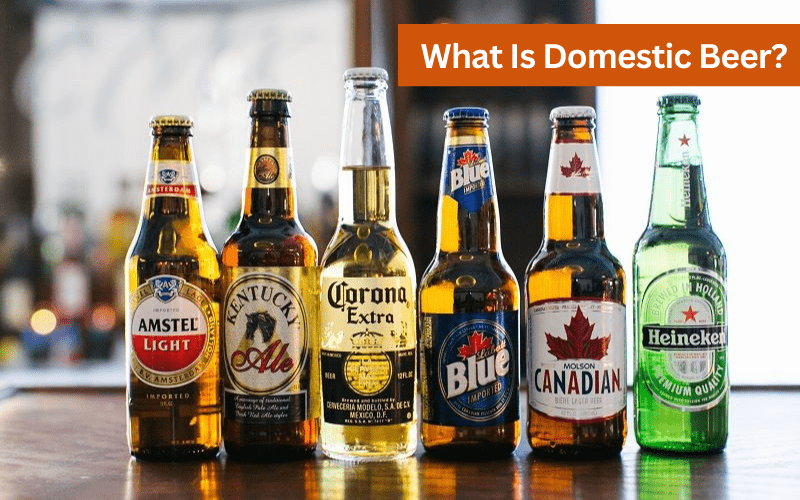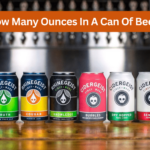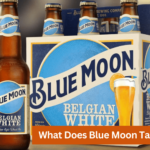When it comes to beer, there are a lot of different styles and brands to choose from, but what is domestic beer, exactly? For many Americans, myself included, domestic beer is a familiar and beloved choice. It’s the kind of beer you can find at almost any bar, and the kind you might choose when hanging out with friends or watching a sports game. As someone who enjoys a cold brew on a hot summer day, I’ve always been curious about what makes domestic beer unique compared to other styles. So, let’s dive into the world of domestic beer and explore what is domestic beer, how it’s made, and what sets it apart from other varieties.
What is a domestic beer?
What is domestic beer is a question that many people ask when they’re first introduced to the term. Essentially, domestic beer refers to any type of beer that’s brewed within the country in which it’s sold. So if you’re in the United States, for example, a domestic beer would be one that’s brewed within the US. This can include large, commercial brands as well as smaller, craft breweries. While the term “domestic” may seem limiting, there are actually many different styles and flavors of domestic beer to explore.
What makes a beer domestic?
So, what is American beer made of? Typically, American beers are made with a combination of water, malted barley, hops, and yeast. Here’s a closer look at each of these ingredients and their role in the brewing process:
- Water: As with any beer, water is the most abundant ingredient in American beer. Brewers carefully select their water source, as the mineral content and pH can have a significant impact on the final product.
- Malted barley: Barley is the primary grain used in American beer, and it must be malted (i.e., allowed to germinate and then dried) before use. Malted barley provides the beer’s sugars, which yeast will later ferment into alcohol.
- Hops: Hops are added to the boiling wort (the liquid extracted from malted grains) to impart flavor, bitterness, and aroma to the beer. American brewers tend to use hops in generous quantities, resulting in beers with a distinct, often citrusy, hop character.
- Yeast: Yeast is responsible for converting the sugars in the wort into alcohol and carbon dioxide. Different yeast strains can produce different flavors and aromas, which is why brewers carefully select their yeast to achieve the desired outcome.
Together, these four ingredients form the backbone of American beer. While some brewers may add other ingredients (such as adjuncts like corn or rice) to achieve a certain flavor or texture, the above ingredients are the essential components of most American beers.
Domestic beer styles
There are many different styles of domestic beer, each with its own unique characteristics. Here are some of the most popular domestic beer styles:
- American Lager: This is the most popular style of beer in the US, characterized by its light color, crisp taste, and low bitterness.
- American Pale Ale: A hoppy beer with a medium body, featuring notes of citrus and pine.
- American IPA: A beer with a strong hoppy flavor and higher alcohol content than the average beer.
- American Brown Ale: A malty beer with a nutty flavor and notes of chocolate and caramel.
- American Stout: A dark, full-bodied beer with roasted malt flavors and hints of coffee or chocolate.
- American Wheat Beer: A light and refreshing beer made with wheat and often brewed with fruit or spices.
- Cream Ale: A light beer with a creamy texture, often compared to a lager in taste.
- American Amber Ale: A beer with a balance of malty sweetness and hoppy bitterness, often with notes of caramel or toffee.
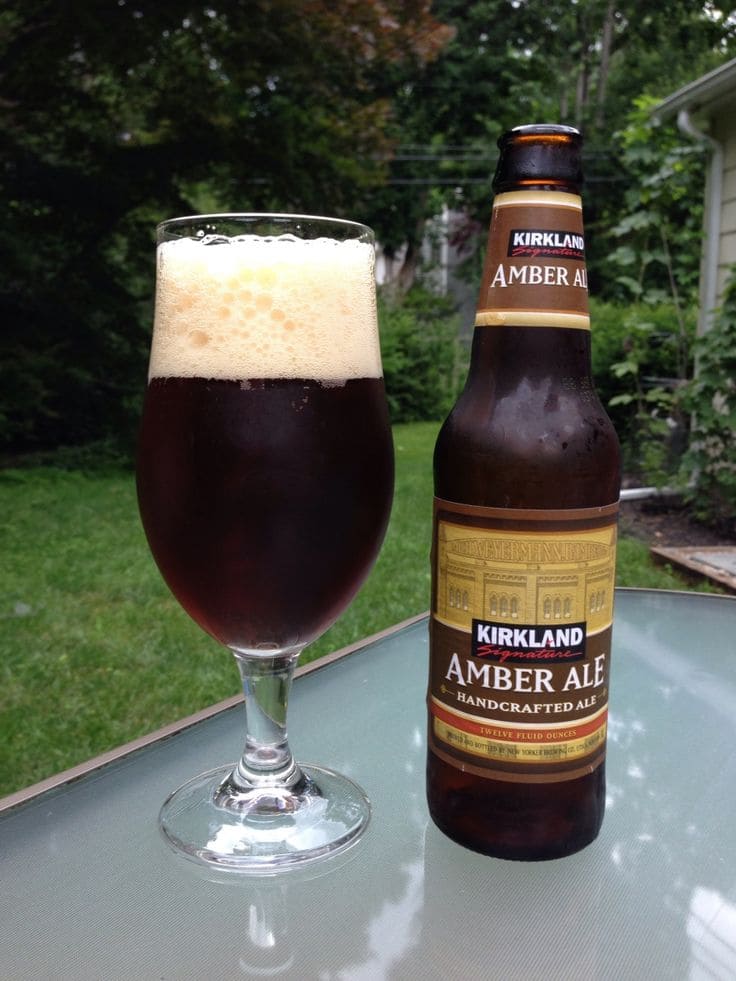
These are just a few examples of the many domestic beer styles available in the US. Each style has its own unique flavor profile and can be brewed to suit a variety of tastes.
Brewing process of domestic beer
The brewing process of domestic beer can vary slightly depending on the specific style, but generally follows the same basic steps. Here’s an overview of the brewing process for domestic beer:
- Mashing: The malted barley is combined with hot water to create a sugary liquid called wort. The wort is then separated from the barley solids.
- Boiling: The wort is boiled for about an hour and hops are added at different times during the boil to give the beer its characteristic bitterness, flavor, and aroma.
- Fermentation: After boiling, the wort is cooled and yeast is added to begin the fermentation process. The yeast consumes the sugars in the wort and produces alcohol and carbon dioxide.
- Conditioning: Once fermentation is complete, the beer is conditioned. This involves storing the beer at a cool temperature for several weeks, which allows the flavors to develop and the carbonation to occur.
- Filtration and Packaging: After conditioning, the beer is filtered to remove any remaining solids and then packaged in bottles, cans, or kegs for distribution.
While this is a simplified overview of the brewing process, it gives a general idea of the steps involved in creating a domestic beer. The process can be adjusted and modified depending on the specific style of beer being brewed and the preferences of the brewer.
Taste profile of domestic beer
Domestic beer has a distinct taste profile that sets it apart from other styles of beer. Here’s a closer look at the taste profile of domestic beer:
- Light and Crisp: Many domestic beers are known for their light and crisp taste, with a relatively low alcohol content and minimal bitterness. This makes them easy to drink and refreshing, particularly in hot weather.
- Balanced Flavors: Domestic beers often have a balanced flavor profile, with a mix of malt sweetness and hop bitterness. This makes them approachable for a wide range of drinkers and pairs well with a variety of foods.
- Clean Finish: Domestic beers typically have a clean finish, with little aftertaste or lingering flavors. This makes them a popular choice for social drinking occasions where people may be consuming several beers over the course of a few hours.
- Carbonation: Carbonation plays a big role in the taste and mouthfeel of domestic beers. Many have a moderate to high level of carbonation, which gives them a fizzy and refreshing quality.
- Adjuncts: Some domestic beers use adjuncts like corn or rice to lighten the body and add sweetness. This can contribute to a slightly different taste profile compared to beers made solely with malted barley.
Overall, the taste profile of domestic beer is generally light, refreshing, and approachable. While there is certainly variation within the category, domestic beers are often a go-to choice for those looking for an easy-drinking, crowd-pleasing option.
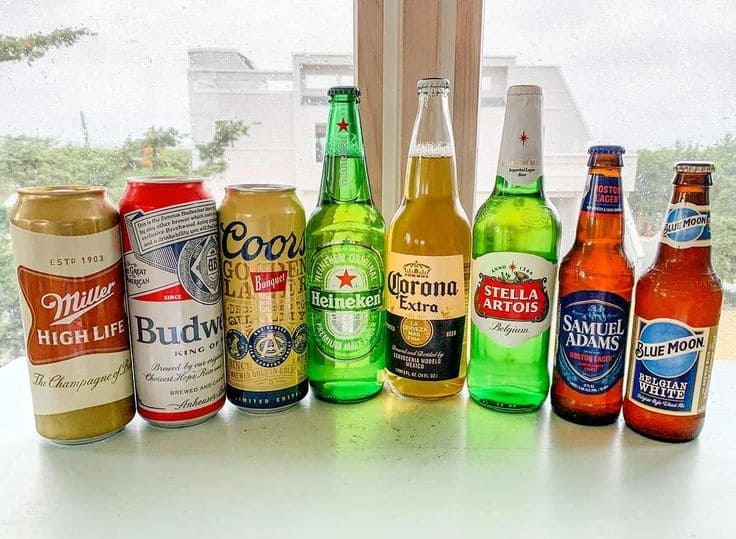
Why is American beer so bad?
This is a subjective question that depends on personal taste. American beer, like any other type of beer, varies in taste, quality, and style. Some people may enjoy American beer, while others may not. It’s worth noting that American craft beer has gained popularity and recognition worldwide in recent years.
Why is American beer so weak?
American beer is not necessarily weaker than other beers. While it is true that many American beers have a lower alcohol content than some European beers, this is not always the case. There are many American craft beers that have high alcohol content and complex flavors.
Why is American beer flat?
If a beer is flat, it may be due to a number of factors, such as improper storage, a problem with the bottling or kegging process, or a lack of carbonation. It is not accurate to say that all American beers are flat. In fact, many American breweries take great care to ensure that their beers are properly carbonated and have a pleasant level of fizz.
Why is American beer so watery?
Many mass-produced American beers have a lighter flavor profile and are lower in alcohol, which can make them seem “watery” compared to other styles of beer. However, this is not true of all American beers. There are many American breweries producing beers with more complex flavors and higher alcohol content, including imperial stouts, barleywines, and other strong ales. Additionally, the rise of the craft beer movement in the U.S. has led to an increase in the production of flavorful and innovative beers that challenge the perception that American beer is “watery.”
Factors that affect taste of domestic beer
Several factors can affect the taste of domestic beer. Here are some of the most significant factors:
- Ingredients: The ingredients used in the brewing process can significantly affect the taste of the beer. The type and quality of the malt, hops, yeast, and water used all contribute to the flavor profile of the beer.
- Brewing Method: The brewing method used can affect the taste of the beer. Factors such as the temperature and length of the boil, the fermentation temperature and duration, and the type of yeast used can all impact the flavor profile.
- Age: The age of the beer can affect its taste. Some beers are designed to be consumed fresh, while others can age and develop more complex flavors over time.
- Serving Temperature: The temperature at which the beer is served can also impact its taste. Serving a beer too cold can mute the flavors, while serving it too warm can bring out off-flavors.
- Glassware: The type of glassware used to serve the beer can affect the taste as well. Different glasses can accentuate certain flavors or aromas, while others can mute them.
- Carbonation: The level of carbonation in the beer can impact the taste and mouthfeel. High levels of carbonation can give the beer a more refreshing quality, while lower levels can make it feel smoother and creamier.
By taking these factors into consideration, brewers can carefully craft a beer with a specific taste profile. Consumers can also experiment with these factors to find the best way to enjoy their favorite domestic beer.
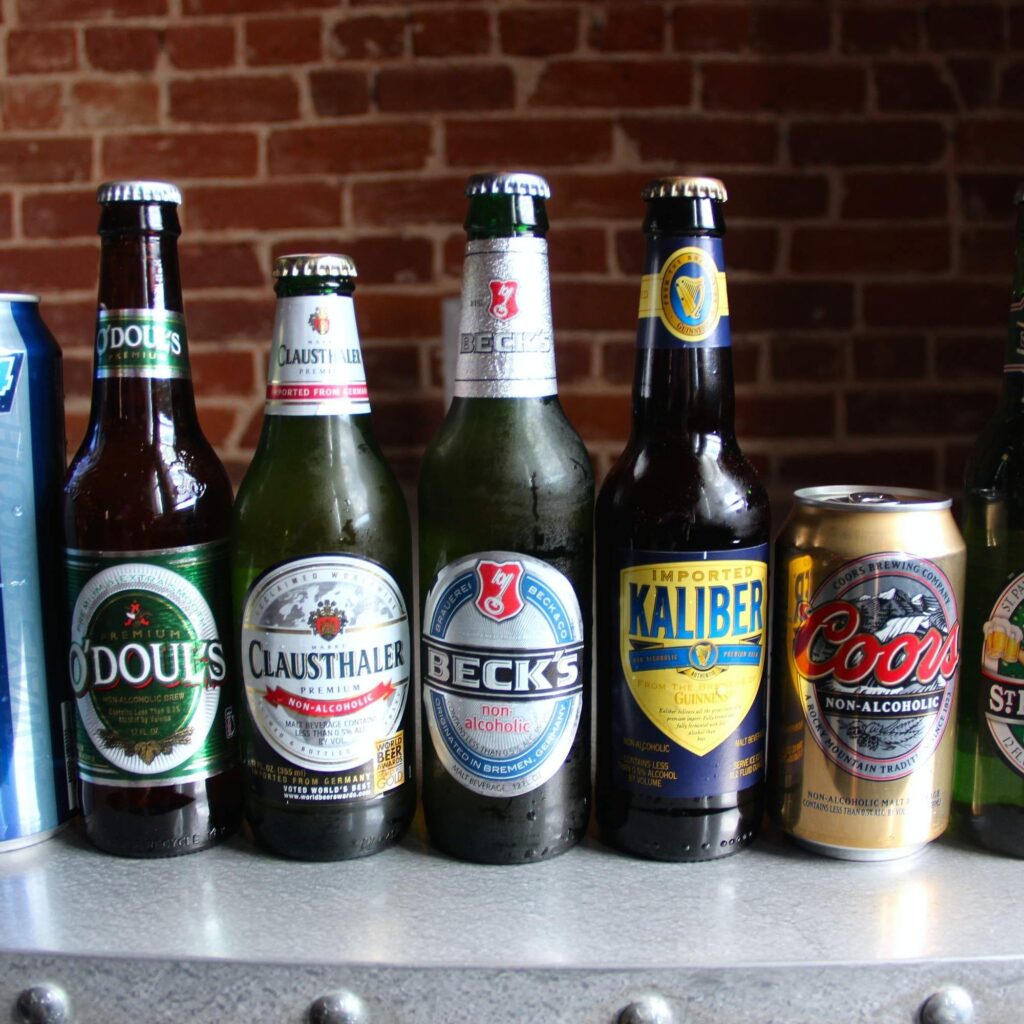
How many calories in domestic beer?
Generally, beer contains around 150 calories per 12-ounce serving. However, light beer typically contains fewer calories, ranging from 50 to 100 calories per 12-ounce serving. It’s important to note that one pint of beer is 16 ounces, which means a pint of regular beer contains about 200 calories, while a pint of light beer contains between 66 to 133 calories.
What is the alcohol content of domestic beer?
The alcohol content of domestic beer can vary depending on the specific style and brand. Generally, domestic beers have an alcohol by volume (ABV) ranging from 4% to 6%. Some domestic beers, such as American IPAs, may have a higher ABV, while others, such as American lagers, may have a lower ABV. It’s important to check the label or ask the bartender if you’re unsure of the alcohol content of a particular domestic beer.
What beers are domestic?
Domestic beer refers to beer that is brewed and distributed within the same country. In the United States, there are many popular domestic beer brands, including:
- Budweiser
- Coors Light
- Miller Lite
- Pabst Blue Ribbon
- Michelob Ultra
- Yuengling
- Sam Adams
- Sierra Nevada
- New Belgium
These are just a few examples of the many domestic beer brands available in the US.
As for the number of American beer brands, it’s difficult to provide an exact figure of how many American beer brands are there as new breweries and beer brands are popping up all the time. However, as of 2021, there were over 8,000 breweries operating in the United States, and each of these breweries may produce multiple beer brands. This means that there are likely tens of thousands of American beer brands in existence.
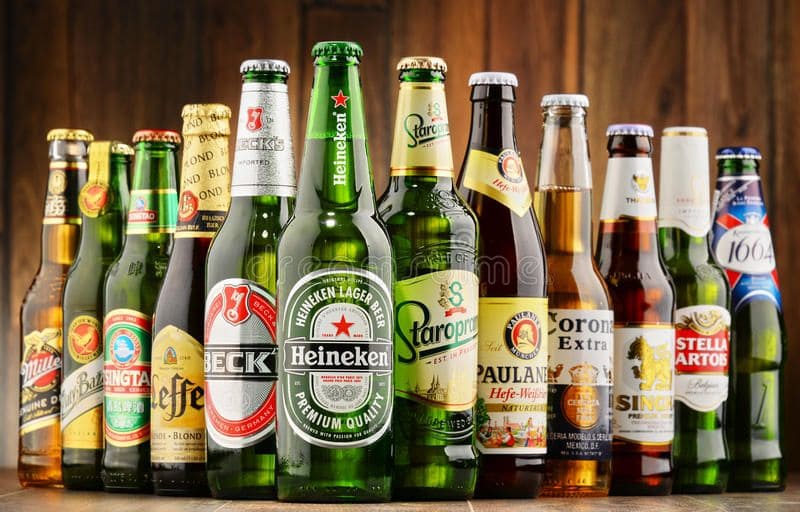
What domestic beers are gluten free?
There are several gluten-free domestic beer options available, including:
- Omission Brewing Co.
- Glutenberg
- New Belgium Glutiny
- Anheuser-Busch’s Redbridge
- Bard’s Tale Beer Co.
What is the strongest domestic beer?
The strongest domestic beer varies depending on the specific brand and style. Some domestic beers with a higher ABV include:
- Sam Adams Utopias (up to 28% ABV)
- Dogfish Head 120 Minute IPA (up to 18% ABV)
- Sierra Nevada Bigfoot Barleywine (up to 12.1% ABV)
- Avery Brewing Company’s The Beast Grand Cru (up to 16.8% ABV)
What domestic beer has the highest alcohol content?
As mentioned above, there are several domestic beers with a high alcohol content, including Sam Adams Utopias and Dogfish Head 120 Minute IPA.
What domestic beer has the lowest carbs?
If you’re looking for a domestic beer with lower carbs, there are a few options available. For example, Michelob Ultra and Miller Lite both contain around 3 grams of carbs per serving.
What domestic beer has the least amount of gluten?
The same gluten-free domestic beer options mentioned above (Omission Brewing Co., Glutenberg, New Belgium Glutiny, Anheuser-Busch’s Redbridge, and Bard’s Tale Beer Co.) are also the beers with the least amount of gluten. They are brewed with alternative grains such as sorghum or rice, which do not contain gluten.
Is Blue Moon a domestic beer?
Yes, Blue Moon is considered a domestic beer in the United States. It is brewed by the MillerCoors Brewing Company, which is a subsidiary of Molson Coors Beverage Company, a North American brewing company. While Blue Moon has Belgian-style roots, it is brewed in the United States and is widely available throughout the country, making it a domestic beer.
Comparison of Domestic Beer to Other Beers
Domestic beer is a popular choice among beer drinkers in the United States. While there are many types of beer available, including imported beer, draft beer, craft beer, and premium beer, domestic beer has its own unique characteristics that set it apart.
What is domestic beer vs imported beer?
Domestic beer is brewed and distributed within the same country, while imported beer is brewed in a different country and then shipped to be sold in the US. Some of the key differences between domestic and imported beer include:
- Flavor: Imported beers may have more unique or complex flavors than domestic beers, as they may be brewed with different ingredients or follow different brewing methods.
- Availability: Domestic beers are generally more widely available than imported beers, which may only be sold in select locations.
- Price: Imported beers may be more expensive than domestic beers due to shipping and importation costs.
What is domestic beer vs draft Beer?
Draft beer is beer that is served from a keg or cask, rather than from a can or bottle. Some differences between domestic beer and draft beer include:
- Freshness: Draft beer is generally considered to be fresher than bottled or canned beer, as it is not subject to the same level of oxidation or light exposure.
- Carbonation: Draft beer may have a different level of carbonation than canned or bottled beer, depending on the specific keg or cask and the type of gas used to dispense it.
- Temperature: Draft beer is typically served at a colder temperature than canned or bottled beer, which can impact the taste and mouthfeel.
What is domestic beer vs craft beer?
Craft beer is a term used to describe beer that is brewed by small, independent breweries using traditional brewing methods and often featuring unique or experimental ingredients. Some differences between domestic beer and craft beer include:
- Flavor: Craft beer often has a more complex flavor profile than domestic beer, as it may be brewed with unique or experimental ingredients or follow unconventional brewing methods.
- Availability: Craft beer is often sold in smaller quantities and may only be available in select locations, compared to the wider availability of domestic beer.
- Price: Craft beer may be more expensive than domestic beer due to the use of high-quality ingredients and the smaller scale of production.
Difference between domestic and premium beer
Premium beer is a term used to describe beer that is considered to be higher quality or more expensive than standard domestic beer. Some differences between domestic and premium beer include:
- Ingredients: Premium beer may be brewed with higher quality or more expensive ingredients than domestic beer, such as specialty hops or imported malt.
- Alcohol content: Premium beer may have a higher alcohol content than domestic beer, which can impact the flavor and overall drinking experience.
- Price: Premium beer is often more expensive than domestic beer due to the use of high-quality ingredients and the perception of higher quality.
Overall, the main differences between domestic beer and other types of beer include the brewing location, availability, price, and flavor profile. Each type of beer has its own unique characteristics and appeal, and consumers may have their own personal preferences when it comes to choosing their favorite beer.
How much is a domestic beer?
The cost of a domestic beer can vary depending on several factors, such as the location, the venue, and the specific brand of beer.
Generally, a domestic beer can range from $3 to $7 in a bar or restaurant, depending on the city and establishment.
At a grocery or liquor store, the cost of a six-pack of domestic beer can range from $6 to $10, depending on the brand and any sales or promotions that may be running.
Note that prices can vary widely depending on the location and other factors, so it’s always a good idea to check with the specific establishment or retailer for the most accurate pricing information.
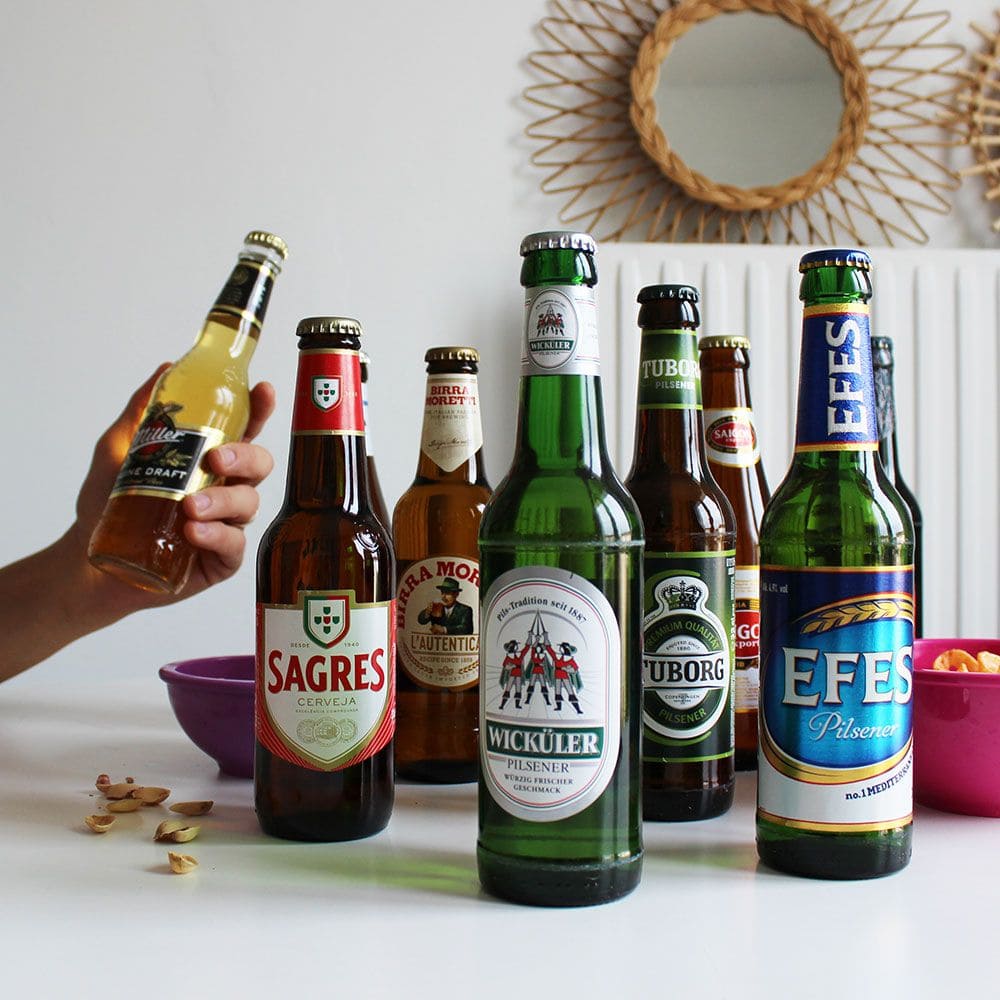
Benefits when choosing domestic beer
There are several benefits to choosing domestic beer. Here are a few:
- Availability: Domestic beer is widely available throughout the country, making it easy to find and purchase at a variety of venues, from bars and restaurants to grocery and liquor stores.
- Affordability: Domestic beer is often less expensive than imported or premium beer, making it an accessible option for those on a budget.
- Consistency: Domestic beer is brewed on a large scale, which means that each batch is generally consistent in terms of flavor and quality. This can be reassuring for those who prefer a reliable drinking experience.
- Variety: There are many different styles and brands of domestic beer available, giving consumers a wide range of options to choose from depending on their personal preferences.
- Supporting Local Businesses: Choosing domestic beer can also help support local breweries and businesses, which can have a positive impact on the local economy.
Ultimately, the choice to drink domestic beer comes down to personal preference and priorities. However, the wide availability, affordability, consistency, and variety of domestic beer make it a popular choice for many consumers.
How should you choose your beer?
Choosing the right beer can depend on several factors, including personal taste, occasion, and food pairings. Here are a few things to consider when choosing your beer:
- Flavor Profile: Think about what flavors you enjoy in a beer. Do you prefer a lighter, crisper taste or something with more complexity? Do you like hoppy or malty beers? Try a few different styles to figure out what you enjoy.
- Occasion: The occasion can also influence what type of beer to choose. For example, a light, refreshing beer may be more appropriate for a hot summer day, while a darker, heavier beer may be better suited for a cold winter evening.
- Food Pairings: Beer can pair well with a variety of different foods, so consider what you’ll be eating alongside your beer. A hoppy IPA can complement spicy foods, while a stout can pair well with rich, chocolaty desserts.
- Alcohol Content: The alcohol content of a beer can vary widely, so consider how much alcohol you want to consume. If you plan on having several beers, you may want to choose a lower ABV option to avoid overindulging.
- Brand and Origin: Finally, consider the brand and origin of the beer. Domestic beers may be more widely available and affordable, while imported or craft beers may offer unique flavors and profiles.
How do you enjoy your beer?
Tips on how to enjoy beer:
- Choose a beer that suits your taste preferences: Different types of beer have different flavors, so it’s important to choose a beer that you enjoy. Consider trying different styles of beer to find the one that suits your taste.
- Serve the beer at the appropriate temperature: The temperature at which you serve the beer can affect its taste. Generally, lighter beers are served colder, while darker beers are served warmer.
- Use the appropriate glassware: The shape of the glass can affect the aroma and taste of the beer. Choose a glass that is appropriate for the style of beer you are drinking.
- Pour the beer properly: Pour the beer into the glass at a 45-degree angle to prevent too much foam from forming. Then, gradually tilt the glass to a vertical position while pouring.
- Savor the aroma and taste: Take time to smell and taste the beer. Sip slowly and pay attention to the flavors and aromas.
- Pair the beer with food: Beer can pair well with a variety of foods. Consider pairing your beer with a snack or meal to enhance the flavor experience.
Remember, everyone’s tastes and preferences are different, so there’s no one right way to enjoy a beer. Experiment with different styles, temperatures, glassware, and food pairings to find the combination that works best for you.
FAQs
When is American beer day?
National American Beer Day is celebrated annually on October 27th.
Is Corona import or domestic?
Corona is an imported beer, originating from Mexico.
Where is the beer capital of the US?
The beer capital of the US is often debated, but some popular contenders include Portland, Oregon; Denver, Colorado; and San Diego, California.
Does beer go bad?
Yes, beer can go bad if not stored properly or past its expiration date. Signs of bad beer include a sour or funky smell and taste.
What is the oldest beer sold in America?
The oldest continuously brewed beer in America is believed to be Yuengling Lager, which was first brewed in 1829 in Pennsylvania.
What beers are not made anymore?
Many beers have come and gone over the years, but some famous discontinued beers include Miller Clear, Bud Dry, and Coors Rocky Mountain Spring Water.
Why is beer kept in colored bottles?
Beer is often stored in colored bottles, such as brown or green, to protect it from light exposure. Light can cause beer to become “light struck,” resulting in a skunky taste.
Can domestic beer be considered a healthy drink option?
While moderate beer consumption has been linked to some health benefits, it is important to note that beer is still an alcoholic beverage and excessive consumption can lead to health risks such as liver disease, high blood pressure, and obesity.
Is Domestic Beer considered “cheap” or “low quality”?
While some domestic beers may be considered “cheap” or “low quality,” there are many high-quality domestic beers available. It ultimately depends on the individual beer and the brewery that produces it.
What are the health risks associated with drinking domestic beer?
The health risks associated with drinking domestic beer are similar to those associated with any alcoholic beverage, including liver damage, high blood pressure, and increased risk of certain cancers. It is important to drink in moderation and make informed choices about the types and amounts of alcohol consumed.
Conclusion
What is domestic beer? After exploring the many facets of this popular drink, I can say that domestic beer is a type of beer that is produced in the United States, using ingredients that are predominantly sourced within the country. It is a staple drink at social gatherings, sporting events, and other cultural events in the United States, and its production and consumption have played an important role in American culture for decades. Personally, I have fond memories of enjoying domestic beer with friends and family, and its distinct taste and affordability make it a go-to choice for many. While the future of domestic beer may face challenges, the rich history and cultural significance of this drink ensure that it will continue to be a beloved part of American society.
I’m Chen Mina, from Vol de Nuit, who has a special passion for bartending, especially mixing wine, beer, and cooktail. Here you will find content about alcoholic beverages, I will bring you knowledge that few people know about this drink.

